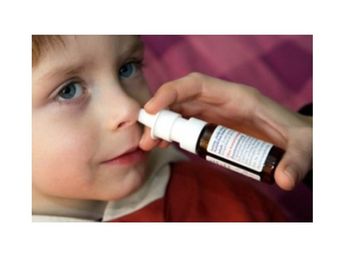Hexosylceramides as adjuvants
Keywords
Hexosylceramides,adjuvants,Mucosal,immunogenicity,a-Galactosylceramid ,(a-GalCer),lipid
Challenge
Mucosal delivery of vaccines allows concerted combat of diseases caused by pathogens that either invade through, or cause disease at mucosal surfaces. A novel vaccination approach is to combine systemic response and local mucosal immune response in order to induce specific protection in distant mucosal sites. Easy application of vaccines as e.g. a nasal spray or nebuliser for inhalation increases patient acceptance and convenience of administration. In developing countries ease of use and low costs of these vaccines are important prerequisites for mass vaccinations. Moreover, injections are a potential risk for infections and disease transmission e.g. HIV, especially in developing countries. In addition many new mucosal vaccine candidates do not elicit sufficiently strong immune responses. The vaccination through mucosal membranes requires potent adjuvants in order to enhance the immunogenicity of the vaccine antigen, to decrease the rate of its degradation and to target the vaccine to the site of immune function. There are only very few adjuvants such as Alum that are approved for the use in humans. Thus the demand for new adjuvants is high and still unmet.
Technology
α-Galactosylceramid (α-GalCer) is a membrane lipid that originally derives from the marine sponge Agelas mauritianus. Bound to methoxypolyethylene glycol (MPEG) solubility and activity of α-GalCer is improved. α-GalCerMPEG interacts with CD1d on antigen presenting cells which communicates the linkage between NK-cells or iNKT-cells and the antigen presenting cells at the very beginning of the induced immune response (before the specific immune reaction is initiated). Co-administration triggers antigen-specific immune responses with a dominant Th2 phenotype. α-GalCerMPEG is particularly useful not only as systemic, but preferably as mucosal adjuvant.
Commercial Opportunity
The technology is offered for co-development or in-licensing.
Development Status
Proof of principle with variety of disease relevant antigens obtained in vivo.
Patent Situation
Granted patents in the USA 2011 (US 8,053,417), Australia 2012 (AU 2006 303 444) and Europe (EP1940464B1) as well as Hongkong (HK 1120436)
Further Reading
- Knothe et al.:The NKT cell ligand α-galactosylceramide suppresses allergic airway inflammation by induction of a Th1 response. Vaccine. 2011 Jun 6;29(25):4249-55.
- Ebensen et al.:A pegylated derivative of alpha-galactosylceramide exhibits improved biological properties. J Immunol. 2007 Aug 15;179(4):2065-73.




